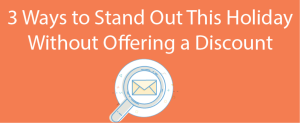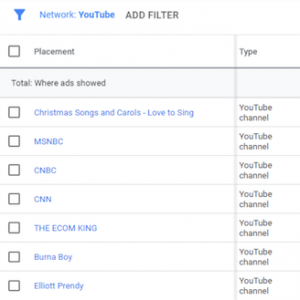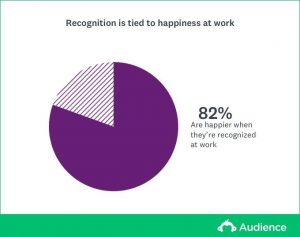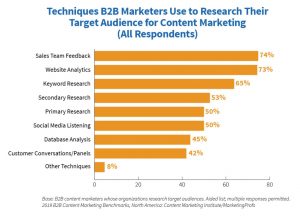
Startup marketing can be a challenging journey, especially if you are starting from scratch. With so many digital channels to invest in and thousands of experts offering you multiple strategies, it is hard to make an informed decision.
The difference between startups and established businesses is the fact that the former is highly concerned with customer acquisition and retention more than anything else.
An established business might have the budget to burn cash for awareness and branding, whereas a startup’s major concern is more likely paying customers that can be generated without that cash burn.
A popular article in Huffington Post reads:
A lot of entrepreneurs get too excited or maybe they just don’t have clarity of direction yet. On the other hand business owners that do have an overall plan and get all of their strategies pulling the same way, are thriving.
I couldn’t agree more with the above statement.
Sean Ellis, the first marketer at Dropbox coined the term growth hacking, with an entire science behind it focused towards technical startup marketing.
This post talks about how popular startups understood the startup marketing funnel and applied successful hacks at every level to reach where they are today.
Understanding the startup marketing funnel
The marketing funnel for startups is based on the AARRR model. Here is what it stands for:

Image Source: Growth Rocks
Let’s dive into them with some more details:
- Acquisition: For startups, this would mean how you can gain the necessary awareness in order to see results from your marketing efforts.
- Activation: Once people know about your business, why should they convert? This step talks about how to move people further from the awareness stage.
- Retention: Why should someone keep using your product or service when there are multiple options available in the market? Retention explains how to keep your customers for life.
- Referral: Nothing is better than word of mouth marketing. This stage talks about how to get more customers out of your existing customers.
- Revenue: Finally, after executing all the above steps, understanding how your business will maintain a positive cash flow and growing profits is the key here.
Now that we are clear with the different steps of the startup marketing funnel, I am going to illustrate all these stages with examples from popular startups.
1. Acquisition: How Airbnb generated the right awareness for their product
After raising some initial funds for their business, the founders of Airbnb Brian Chesky and Joe Gebbia, started to analyze better ways of scaling their business other than paid acquisition.
They narrowed down their market research to one question.
Where does the target audience that looks for something other than a standard hotel experience hang out digitally?
The answer was Craigslist.
In order to get more traction for their listings, Airbnb decided to give an option to their site visitors for sharing their listing on Craigslist as well.
With a smooth marketing message, they encouraged people to share listings on Craigslist as well.
The results?
Using this hack, Airbnb received the attention of thousands of users from Craigslist, and since their listings were much more attractive with better descriptions and photographs than Craigslist, this led to a viral growth cycle.

Image Source: Growth Hackers
2. Activation: How PayPal activated users
Paypal was one of the most successful startups of the late 90’s.
Their phenomenal growth story involves going from 1 million users in March 2000 to 5 million users in summer 2000.
They started activating users by paying them to sign up. With every sign up, Paypal paid you $ 20 to sign up (and also $ 20 for a referral). As the value of their network grew, they reduced the bonus to $ 10, $ 5 and eventually nothing.
This was a classic example of activating users by giving an incentive.
Paypal tried a lot of advertising but this method achieved them the lowest CAC.

Image Source: Quora
3. Retention: How Groove reduced their churn rate by 71%
A major problem SaaS companies face is high churn rates.
Churn rate is the percentage of people exiting out of your subscription based business.
One such company that was struggling with churn rate was Groove.
Groove is a simple help desk software for businesses which comes at $ 15 per user.
Despite a healthy flow of new users, Groove’s 4.5% churn rate was making the business model unsustainable.
The folks at Groove analyzed the difference between users who stayed for more than 30 days and the ones who quit before that.
They divided people in the following categories:

After a lot of analysis, Groove decided to send targeted emails to people who spent less time on the platform and were likely to opt out after 30 days.
People with sessions under 2 minutes were sent this message:

Image Source: Kissmetrics
Someone who logged in fewer than 2 times in the first 10 days was sent the following message:

Image Source: Kissmetrics
The results?
Using this conversion optimization strategy, Groove was able to reduce churn rate by 71%.
Key Takeaways
Understanding where people might be struggling with your product/service and addressing the same could get amazing results.
4. Referral: How Dropbox fueled their growth with referral marketing
Dropbox is probably one of the most popular tech startups. The success behind it’s viral growth is referral marketing.
With paid marketing, Dropbox was spending $ 250 per customer for a product that was priced at $ 99.
“Dropbox went from 100,000 to 4,000,000 users in 15 months”
Here are the steps Dropbox used to boost their growth…
Every friend you referred to Dropbox will earn you 500 MB more storage. You can earn up to 16GB of free space using the strategy.

Image Source : Referral Candy
They also made sure that inviting friends was easy to do .

Image Source : Referral Candy
The key takeaway from this story is that word of mouth marketing is one of the most powerful strategies.
If you can incorporate referral signups/purchases in your business model with a valuable incentive for customers, it can be a strong driver for growth.
5. Revenue: The growth engine of PicMonkey
PicMonkey is a startup in one of the most competitive spaces – photo editing.
However, building a great product with a freemium model has done really well for them.
Millions of users join every month and billions of photos are edited.
People can access basic filters for free. For advanced filters and tools, people have to pay $ 4.99 on a monthly basis.
And hundreds of thousands of users pay that subscription price.

Image Source: Fortune
The company makes millions and the CEO mentioned that the growth is 40% year over year.
The major takeaway from this is about building freemium models.
If you offer a part of your service as free, users will learn how good your product is.
This will help them understand the value they could get once they purchased your product or service.
Going freemium with your products or services can do well for business growth.
Wrap
As a startup, you need to understand which part of the AARRR funnel does your business lie in.
Maybe you are at the initial stages and awareness is most important to you.
Maybe you need to improve customer retention and focus your energy there.
Whatever be the case, evaluation of your current scenario and taking action based on that is something that will drive substantial growth.
Business & Finance Articles on Business 2 Community(76)








